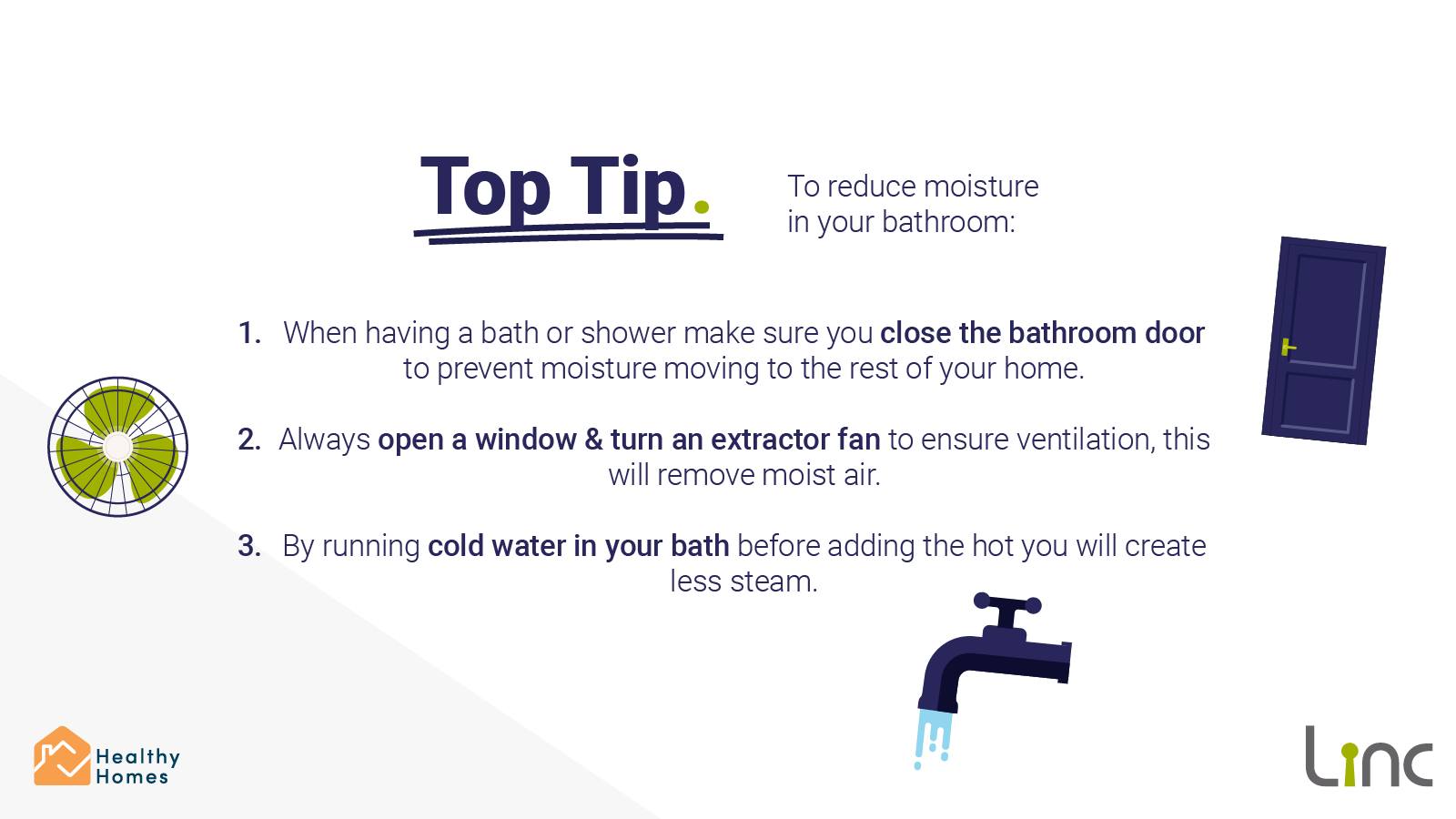5 Top Tips for Creating a Healthy Home
This is why Linc and Pobl have teamed up to create Healthy Homes Cymru, a platform our customers can access to see guides to creating a healthy home. We want to make sure that our customers are aware that moisture and condensation are completely normal and natural occurrences and don’t make your home lesser than anyone else’s. With the help of our six top tips, you’ll be armed with the knowledge to best prevent condensation and mould within your home.
What’s Moisture, Condensation and Mould?
Before we get into the top tips, it’s a good thing to know exactly what moisture, condensation and mould are and why they occur.
As we’ve already mentioned, moisture, condensation and mould are perfectly normal and can happen due to a wide range of different activities within your home. From cooking, running baths and drying laundry, when these activities occur in your home, they add moisture to the air. An excess of this moisture can then turn into condensation, especially in colder winter months when your room or home is too cold and there isn’t good ventilation. When this becomes a regular occurrence, condensation can then form into damp patches or mould which are often found around windows, ceilings and walls.
So how can we reduce moisture and condensation in our homes before it turns into mould?
Reduce Moisture and Condensation
1. When Cooking
We often don’t realise how much moisture is created when cooking, from steamy ovens and boiling pots of water, they all contribute to excess moisture in the air. Creating steam and moisture is pretty unavoidable when cooking, so how do we instead reduce its affects?
Well, putting a lid on your saucepan will help to keep most of the steam contained and it will help your water to boil quicker from maintaining heat more efficiently.
Next, make sure to open your kitchen window and/or put on your extraction fan, this will help to move the moisture out of your kitchen. Another useful tip is to keep your kitchen door shut while cooking; this will make sure the moisture doesn’t move throughout the rest of the house.
2. When Drying Laundry
Another way your home produces moisture is when you dry your laundry inside. In the dark wet winter months, we often don’t have the luxury to air dry our clothes on the washing line like we do in the summer; or perhaps you live in a flat and don’t have access to a washing line. But don’t worry, there are a couple of ways to reduce the moisture created when drying laundry inside.
Firstly, when it’s not possible to dry your laundry on a washing line, hang your wet clothes on a drying rack in a well-ventilated room, this can be achieved by opening a window.
Secondly, avoid putting your wet clothes on your radiators, this may seem like the easiest and fastest option, but it simply releases more moisture into the air which can then lead to condensation and mould. 

3. In the Bathroom
There’s nothing better than getting into a nice, warm bath at the end of the day. However, your hot bath, or shower, could be causing a lot of condensation within your home.
Just like when cooking, it’s important to shut the bathroom door to stop the moisture from moving around your house and potentially causing issues elsewhere. Similarly, you should always open your windows and turn on your extraction fan to provide your bathroom with good ventilation.
Did you know – when running your relaxing bath, if you run the cold water first, followed by the hot water, you’ll produce less steam. In turn, this means there will be less moisture in the air, which means less condensation and a less likely chance of mould developing.


4. With Good Ventilation
As we’ve seen in the tips above, ventilation is often an important step to ensuring excess moisture doesn’t build-up into condensation and mould. After every activity, whether that’s cooking, showering or drying laundry, you should open a window, and if you have one, turn on the extractor fan. This will allow your home to breathe by removing excess moisture from the air and preventing it from turning into condensation.
Another way you can help to ventilate your home is by giving it breathing space – quite literally! Make sure air can circulate around your home by leaving gaps between furniture and walls and try not to put items under your bed or sleep on a mattress on the floor. This will avoid moisture getting trapped and then creating condensation.
5. With the Right Temperature
Finally, we’ve briefly mentioned how moisture, condensation and mould most often occur in the colder months when your home isn’t warm enough. However, warm air holds a greater percentage of moisture than cold air, meaning when you put your heating on too high, it can increase the likelihood of condensation and mould occurring. To further reduce moisture, turn the thermostat to a steady 16°C, this is a good temperature to keep you warm, but also cool enough to not create excess moisture in the air.


Just remember these few simple steps to help reduce moisture, condensation and mould within your home, they can make a big difference in creating a happy, healthy home.
For more information, visit Healthy Homes Cymru, or for guidance and support from us, please contact one of our friendly team members who will be more than happy to help.
